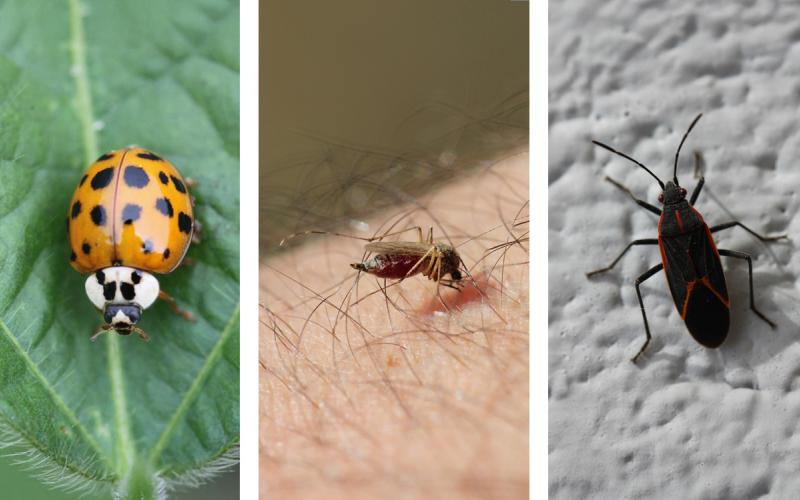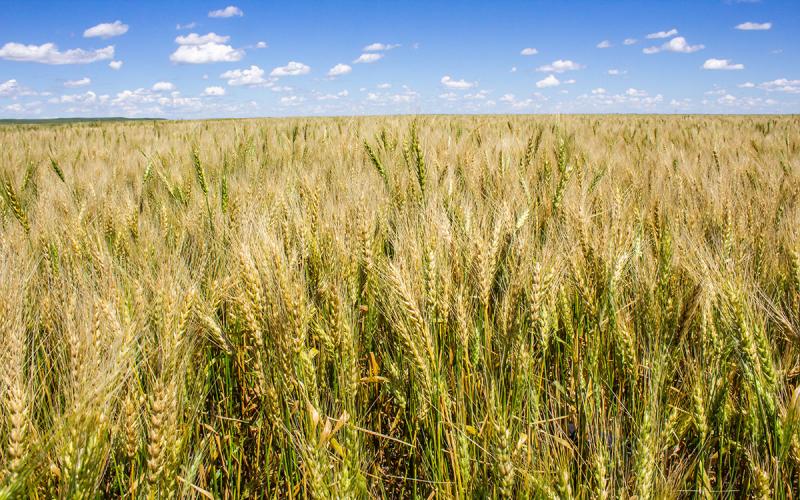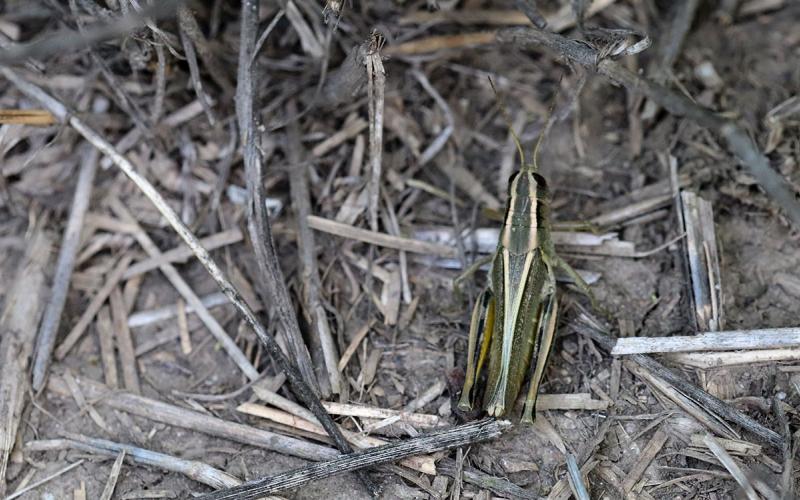Written collaboratively by Shelby Pritchard, former SDSU Extension Pest Management Specialist, Adam Varenhorst, Philip Rozeboom, Patrick Wagner, Amanda Bachmann and Ruth Beck.
Originally Submitted: August 8, 2022
We have recently observed large populations of grasshoppers in Southeast and Western South Dakota. Most observations have consisted of differential (Figure 1) and two-striped grasshoppers (Figure 2), but it’s likely that other species, like the red-legged grasshopper (Figure 3) are present as well. The large populations can likely be attributed to abundant food resources from the previous year. Due to the destructive feeding habits that grasshoppers have, it is very important to monitor their populations prior to and during winter wheat planting. As the season progresses and crops begin to dry down, grasshoppers will be forced to search for new plant growth (i.e. newly emerged wheat plants). Once winter wheat has emerged, monitor field margins for clipped plants, as grasshoppers tend to reside in nearby vegetation.
Grasshopper Identification
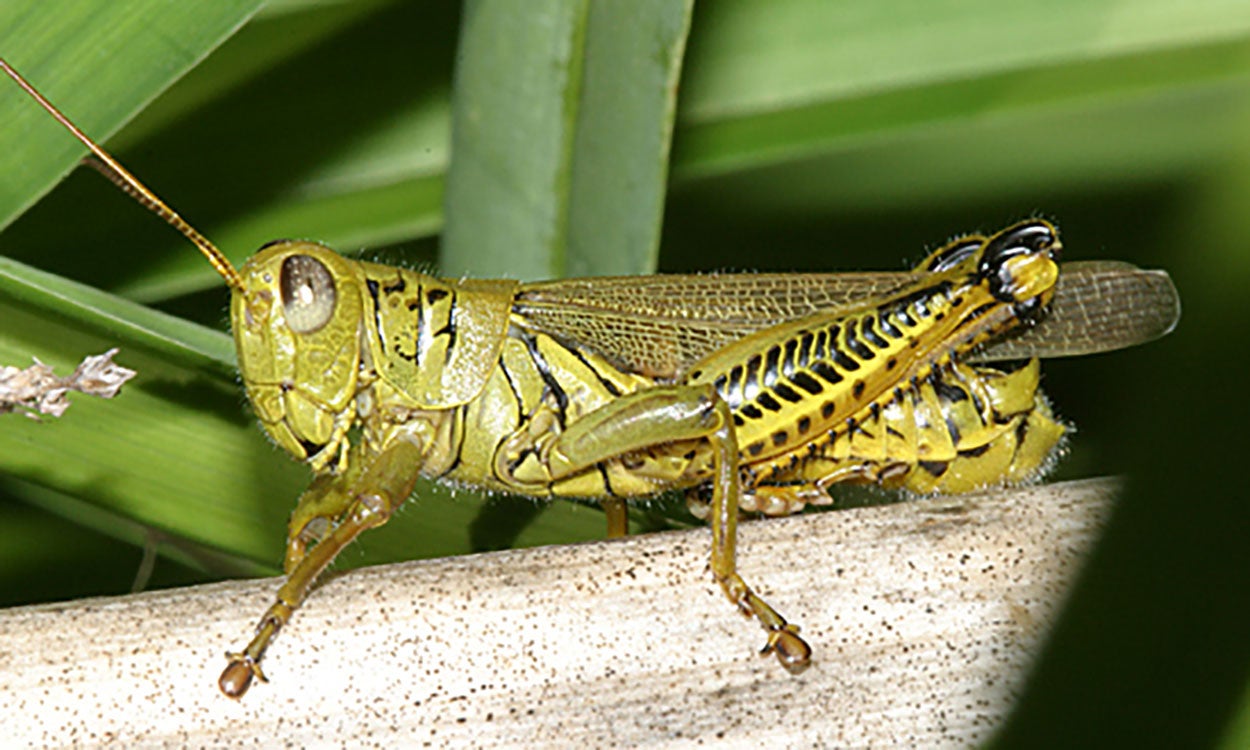
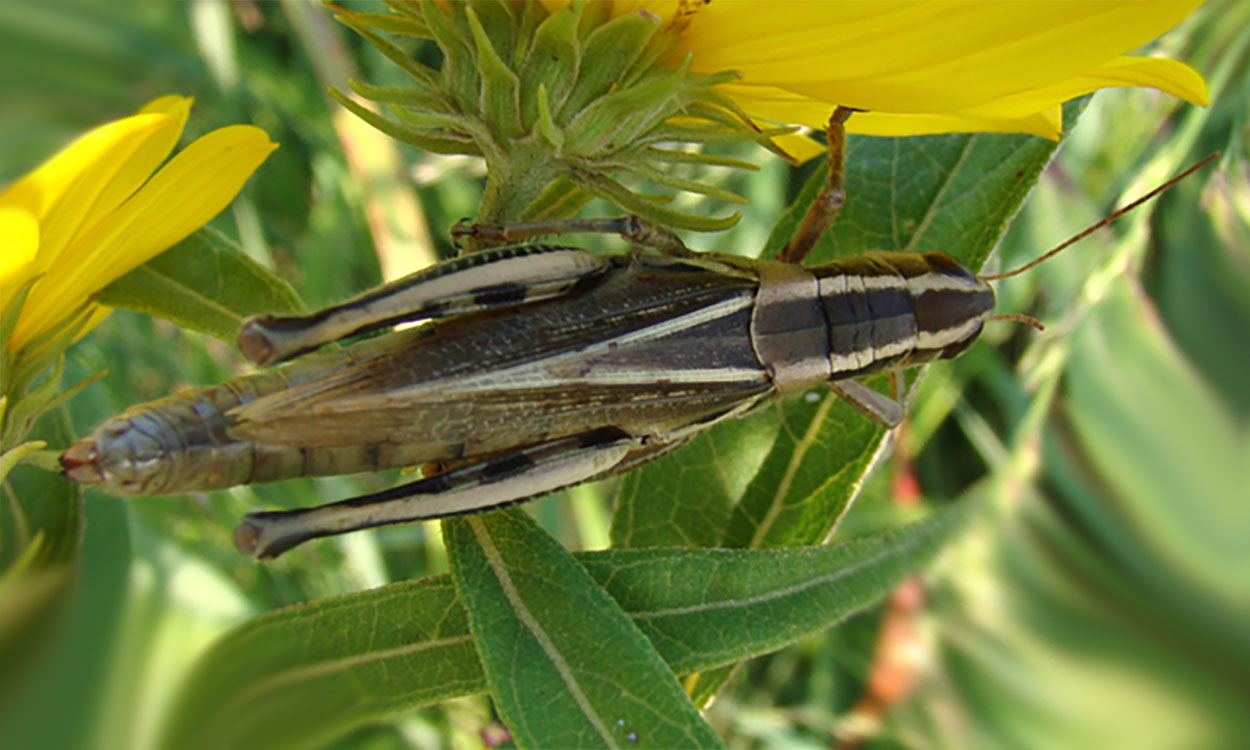
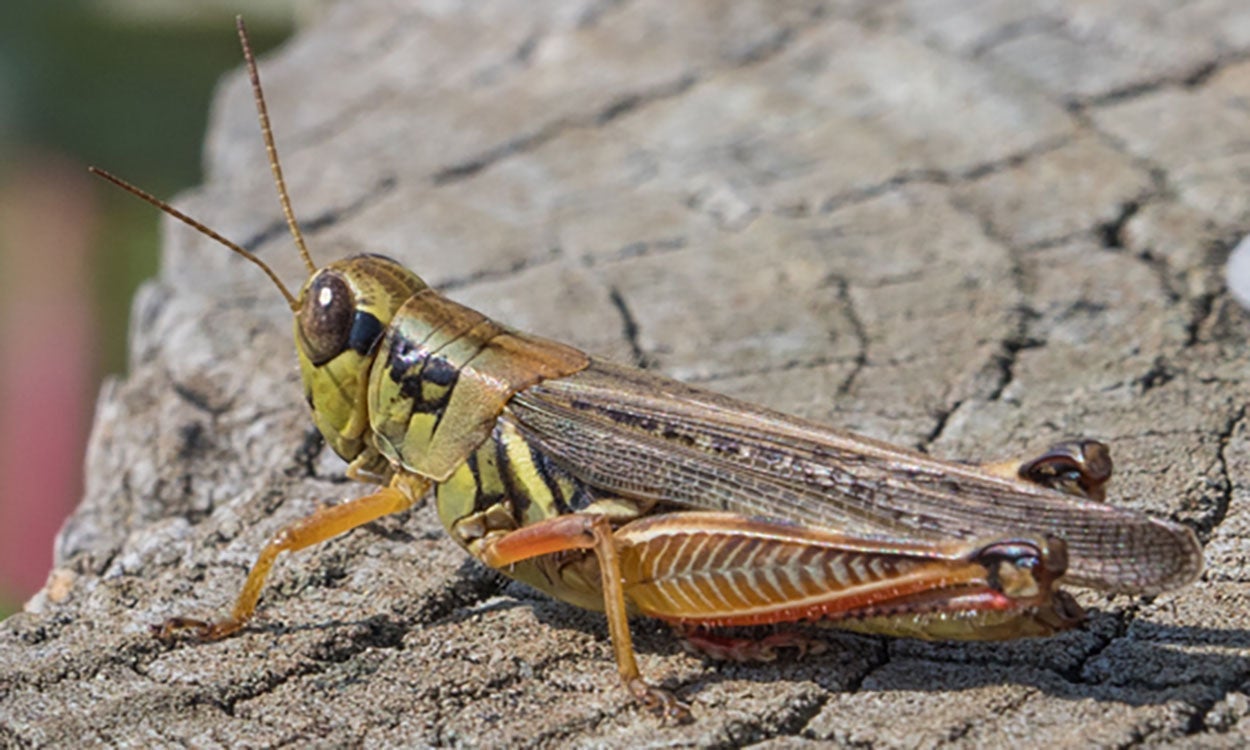
Grasshopper Management Options
Prior to Planting
Before planting, scout the vegetation around the field edges and count the number of grasshoppers that are present in approximately one square yard. Management should be considered if 11 to 20 grasshoppers per square yard are present in the non-crop borders.
Management options to consider include:
- Delaying planting: In areas of South Dakota with high populations of grasshoppers, delay planting to reduce the time feeding occurs on the emerging wheat.
- Increasing plant stands: Measure an area 60 to 120 feet wide around the field edge when grasshopper populations are high and double the planting population. The increased plant stands around the field edge will slow the movement of the grasshoppers into the field, compensate for lost seedlings, and allow for a reasonable stand to exist after grasshopper foraging has ceased.
- Insecticide seed treatments: These can either be planted along field edges in a strip that is 60 to 120 feet wide or planted to the entire field. Please refer to the latest South Dakota Pest Management Guide - Wheat for insecticide seed treatment options and recommended rates.
- Foliar insecticides: To prevent grasshoppers from moving into wheat fields, foliar insecticide sprays may be applied to the non-crop field edges. Always check the label before selecting an insecticide to ensure it can be sprayed on non-crop areas. Refer to Table 1 for a list of non-crop and pasture insecticide options.
| Insecticide |
(for grasshoppers) |
(hours) |
|---|---|---|
| Non-Cropland4 | ||
| Asana XL (esfenvalerate) |
|
|
| Karate Insecticide with Zeon2 Technology (lambda-cyhalothrin) |
|
|
| Warrior II with Zeon Technology2 (lambda-cyhalothrin) |
|
|
1 This list is not meant to be comprehensive. Always read and follow label directions.
2 Label rates for non-cropland are based on those of adjacent crop.
3 Adult grasshoppers will require higher rates than nymphs (immatures).
4 Do not graze livestock on treated areas.
After Planting
If grasshopper populations are causing severe defoliation or clipping in newly emerged winter wheat, it is important to determine if their populations exceed 1 to 8 grasshoppers per square yard. Additionally, determine how far into the field the grasshopper populations are.
When grasshoppers are only present around the field edge, a foliar insecticide application to that area may be sufficient for reducing feeding pressure. It is important to remember that there will be residual activity of the foliar insecticides due to the limited leaf area of emerging wheat. Please refer to the latest South Dakota Pest Management Guide - Wheat for a list of foliar insecticides that may be applied to wheat.
If injury to the field edge is severe due to heavy grasshopper feeding pressure, it is possible to replant those areas after the first hard frost occurs. At this time, grasshopper populations will have declined significantly.
